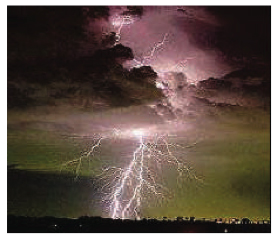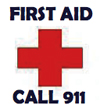
| CONNECTIONS |
IDAHO
ITD
HOME
511 TRAVEL SERVICES
IDAHO
DMV
ITD
NEWS
HIGHWAY
SAFETY
IDAHO STATE POLICE
STATE OF IDAHO
NIATT
NATIONAL
AASHTO
AAMVA
AAA of IDAHO
FEDERAL HIGHWAYS
FEDERAL AVIATION
IDAHO STATE POLICE
NHTSA
NTSB
TRB
U.S. DOT
TRANSPORTER
Archives
Milestones
Comments
Idaho
Transportation
Department
Office of Communications
P.O. Box 7129
Boise, ID 83707
208.334.8005
Fax: 208.334.8563

Don't treat lightning lightly
From the Ada City-County Emergency Management
Idaho’s beautiful summer weather calls us all to enjoy the great outdoors. Sporting events, hiking, biking, camping and boating are just some of the activities that bring us outside. Perhaps these activities help explain why weekends, between the hours of noon and 6 p.m., are the time when the most lightning -related fatalities and injuries occur.
 Responsibly recreating outdoors means having a lightning safety plan in place. Before you go out to play, make a plan and know:
Responsibly recreating outdoors means having a lightning safety plan in place. Before you go out to play, make a plan and know:
- When activities should be stopped.
- Where to go for safety.
- When it’s safe to resume activities.
- What to do if someone is struck by lightning
Additionally, if you are supervising an organized group activity you should have a responsible designated party that monitors weather broadcasts during the event. Listening to a weather alert radio will provide this critical information. Advance notice can make the difference between safety and danger.
- Stop outdoor activities when lightning is observed and thunder is heard. Lightning will occur within 6-10 miles of the storm. If the time between the observed lightning and heard thunder is 30 seconds or less the storm is within six miles.
- Seek shelter immediately. Safe shelters include sturdy buildings (homes or commercial buildings) and hardtop vehicles (passenger vehicles or school buses). Small outdoor buildings like dugouts, rain shelters or sheds do not provide safe shelter from lightning. Never seek shelter under a tree or near any type of utility pole, trees and other tall objects increase your risk of injury. If you are on or in water, get to shore and shelter right away.
- It is safe to return to outdoor activities 30 minutes AFTER the last thunder clap is heard.
What if you are caught outdoors and are nowhere near a safe shelter?
If lightning is imminent, it will sometimes give a few seconds of warning. Your hair might stand up on end, or skin might tingle, light metal objects may vibrate, or you could hear a crackling or "kee-kee" sound. Get away from isolated trees, poles, metal fences or bleachers. Squat low to the ground on the balls of your feet, place your hands on your knees with your head between them.
You need to make yourself the smallest target possible and minimize your contact with the ground.
The “Lightning Crouch,” as the position is called, should only be used as a last resort. Do not lie flat on the ground, when lightning strikes, it can produce current in the ground that can be fatal up to 100 feet away from the strike. The best answer is to plan outdoor activities in accordance with the weather and to have safe shelter available when it’s needed. When you go out to play, play it safe.
 Death associated with lightning strike is often from cardiac arrest and/or stopped breathing. Call 911 immediately. Performing CPR (cardio-pullmonary resuscitation) and/or mouth- to- mouth resuscitation as needed could save the life of a strike victim.
Death associated with lightning strike is often from cardiac arrest and/or stopped breathing. Call 911 immediately. Performing CPR (cardio-pullmonary resuscitation) and/or mouth- to- mouth resuscitation as needed could save the life of a strike victim.
Lightning victims do not retain an electrical charge, contrary to the myth, so there is no risk of shock to the rescuer. However, if the thunderstorm is still active and you are at continued risk of a strike, consider moving the victim and yourself to a safer location.
Published 6-6-8